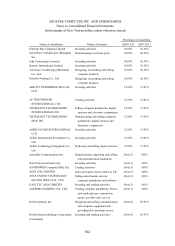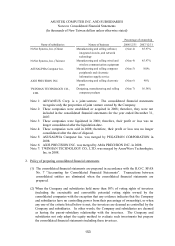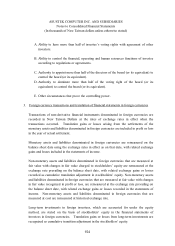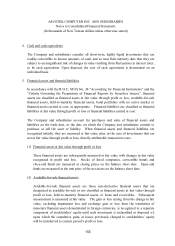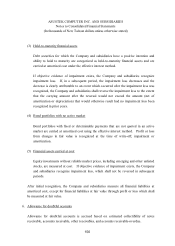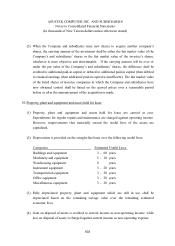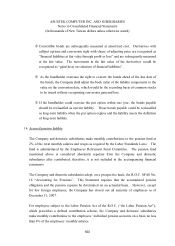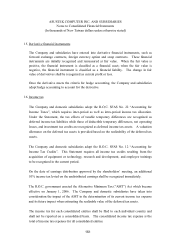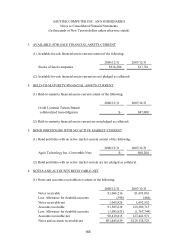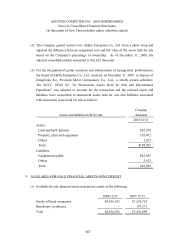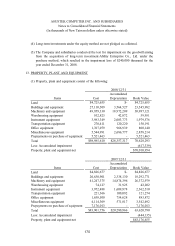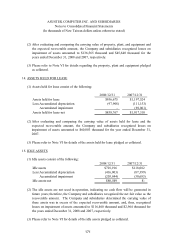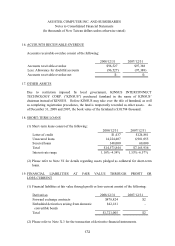Asus 2008 Annual Report Download - page 166
Download and view the complete annual report
Please find page 166 of the 2008 Asus annual report below. You can navigate through the pages in the report by either clicking on the pages listed below, or by using the keyword search tool below to find specific information within the annual report.
162
ASUSTEK COMPUTER INC. AND SUBSIDIARIES
Notes to Consolidated Financial Statements
(In thousands of New Taiwan dollars unless otherwise stated)
17. Revenue and cost
The Company and subsidiaries recognize revenue when the revenue earning process has been
significantly completed, which means the revenue has been realized or readily realizable and
earned. Cost is recognized when the related revenue is accrued; expenses are recognized as
current expenses when incurred in accordance with accrual basis.
18. Asset impairment
The Company and subsidiaries assess indication for impairment for all applicable assets
subject to the R.O.C. SFAS No.35 on the balance sheet date. If impairment indication
exists, the Company and subsidiaries then compare the carrying amount with the recoverable
amount of the assets or the cash-generating unit (“CGU”) and write down the carrying
amount to the recoverable amount where applicable. Recoverable amount is defined as the
higher of net fair value and usable value. In contrast, if there is evidence that the
impairment loss may no longer exist or may have decreased, the Company and subsidiaries
shall reassess the recoverable amount on the balance sheet date. When the recoverable
amount of the asset increases due to the increase in its estimated service potential, the
Company and subsidiaries shall reverse the impairment loss to the extent that the carrying
amount after the reversal would not exceed the amount (net of amortization or depreciation)
that would otherwise result had no impairment loss been recognized in prior years.
In addition, a goodwill-allocated CGU or group of CGUs is tested for impairment each year,
regardless of whether indicator for impairment exists. If an impairment test reveals that the
carrying amount, including goodwill, of CGU or group of CGUs is greater than its
recoverable amount, then an impairment loss is recognized. The loss is first recorded
against the goodwill allocated to the CGU, with any remaining loss allocated to other assets
on a pro rata basis proportionate to their carrying amounts. The write-down of goodwill
cannot be reversed in subsequent periods under any circumstances.
Impairment losses and reversals are classified as non-operating loss or income, respectively.
19. Employees’ bonuses, directors’ and supervisors’ remuneration and share-based payment
The Company and subsidiaries adopt Interpretation No. 96-052 by Accounting Research and
Development Foundation to account for its employees’ bonuses and directors’ and
supervisors’ remuneration as expenses rather than as distribution of retained earnings. The
Company and subsidiaries adopt the R.O.C. SFAS No. 39 to account for the transfer of
equity instruments from the Company and subsidiaries as well as their shareholders to their
employees.


